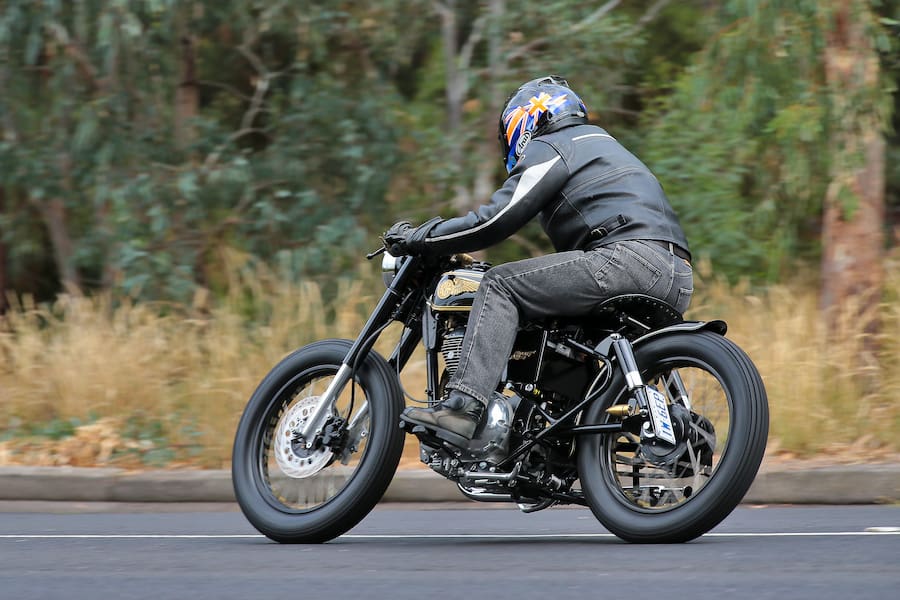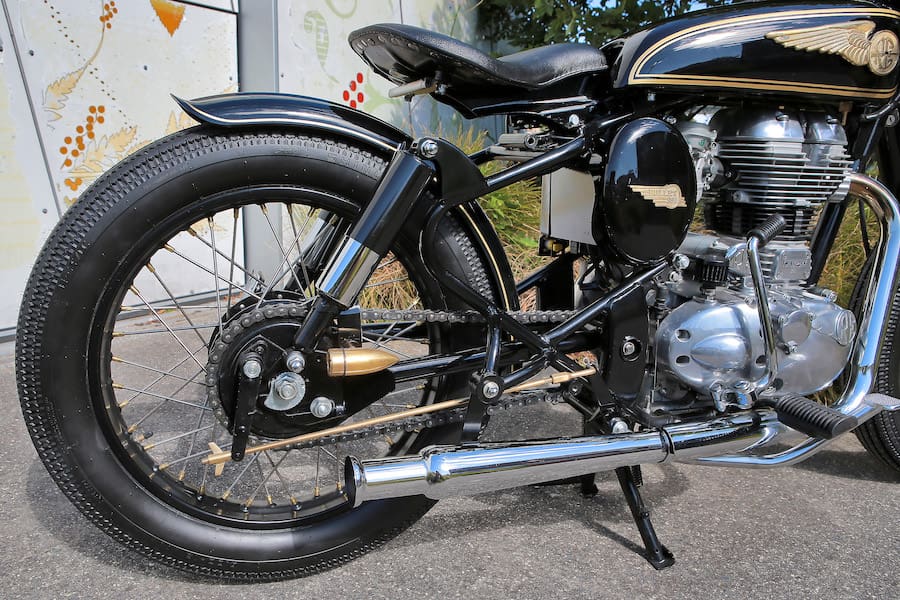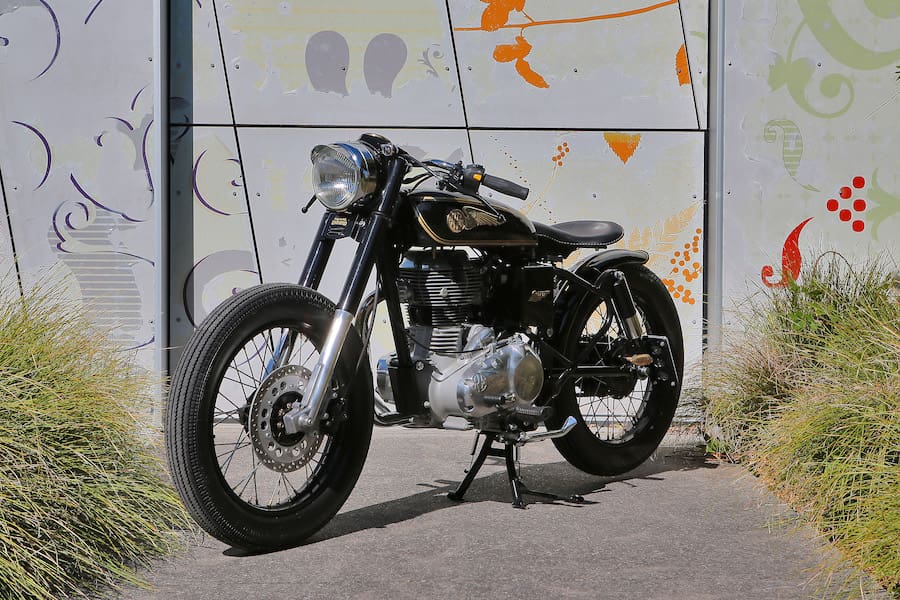Royal Enfield’s unique status as a manufacturer whose entire product line consists of making yesterday live again means its bikes naturally lend themselves to period customisation. Except you don’t need to worry about rejuvenating the worn-out mechanics of yesteryear when you take on an Enfield Custom – just grab a brand new bike and you’re ready to go.
Hence the growing global trend of its air-cooled, overhead-valve, pushrod singles to appear in highly modified and ultra-personalised form, and featured in bike-building competitions all over the world.

It was for a Royal Enfield-only build-off staged by the firm’s Australian distributor, Urban Moto Imports, that Mid Life Cycles in Melbourne conceived and created this delectable bobtail RE350 ‘Brass Rajah’ – one of the eight entries by Australian and New Zealand dealerships, which had to be entirely constructed within a 31-day period using a 350cc Classic as the basis.
Even though the Brass Rajah was only runner-up in the final judging, losing out to Royal Enfield Sydney’s ‘Rough Cut’ entry, the demand for copies has been so great that Mid Life Cycles CEO Michael Catchpole has agreed to construct a series of special orders, meaning each bike can be tailored to the tastes of its customer.
“We were delighted when after [the build-off], the international online custom blog Pipeburn nominated us to be part of their 2016 Bike of the Year,” Catchpole said.

“We made the top 10 in the final judging, which was a vindication of what we’d set out to do. That led to significant pressure from potential customers to buy replicas, and we’re building two such bikes, plus we’re in final discussions for a third, all within the $15-20K price range for a brand new Brass Rajah bobber as either a 350cc or 500cc.
“One of the first two is not perhaps as ambitious as the show bike, and is being built for an owner who wants to ride it in a country town without drawing too much police attention – while getting lots of the good kind! So his would be what we’ll call a Rajah Lite, whereas the other one is an absolutely loaded full-on build with everything included, and a bit more besides.”
Cruising around Melbourne, I discovered this modern Aussie take using neo-vintage hardware from India on a Yankee-style hot rod is both capable and competent, as well as dead cool.
For those unfamiliar with this iconic piece of two-wheeled Americana, the ‘bobber’ was the forerunner of today’s custom bikes, initially concocted in the late 1940s and early ’50s by GIs returning home with accumulated war wages ready to be spent on a motorcycle. To do so, they invariably used a Harley-Davidson or Indian as the basis – but also vintage-era Triumph twins of Brando’s Wild One pre-Bonneville generation.
But as more and more war veterans were demobbed, a shortage of civilian bikes ramped up prices, leading them to acquire surplus military dispatch bikes that they ‘bobbed’ by cutting back the rear fender and stripping off other unwanted parts to make the result as light as possible for street racing.
Going from a dead stop to flat out as fast as possible was the bobber’s mantra, as practiced in illegal street drags. A bobber represented a minimalist approach to bike building that was made for go, not show, so anything that didn’t constitute a necessity was deleted.

One of Harley-Davidson’s recent bestsellers has been the bobber-style Forty Eight, and Triumph’s authentically styled new Bonneville Bobber has become the fastest-selling model in the history of the brand. Now Mid Life Cycles’ Brass Rajah shows the Royal Enfield parent company how they might achieve the same goal.
Catchpole aimed to build a bike that emphasised the design strengths of Royal Enfield’s Classic range, focusing on its upright, sculpted, timeless-looking overhead-valve single-cylinder motor.
“We took a brand new Royal Enfield Classic 350, sat it on the workshop floor, walked around it a few times, and then started pulling bits off,” he said. “After stripping off all the many unwanted pieces and staring at the engine sitting high in the rolling frame, we realised we needed to visually lower and physically lengthen the profile of the bike.”
The latter was achieved by lengthening the swingarm 75mm with an all-new tubular steel design by Hallam Racing’s Andrew Hallam, the co-designer 20 years ago of the remarkable Hunwick Hallam X1R V-twin Aussie Superbike.

TEST Alan Cathcart
PHOTOGRAPHY Stephen Piper
Read the full story in the current issue of AMCN (Vol 67 No 23) on sale now











